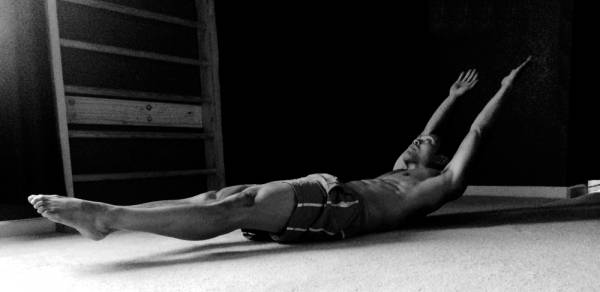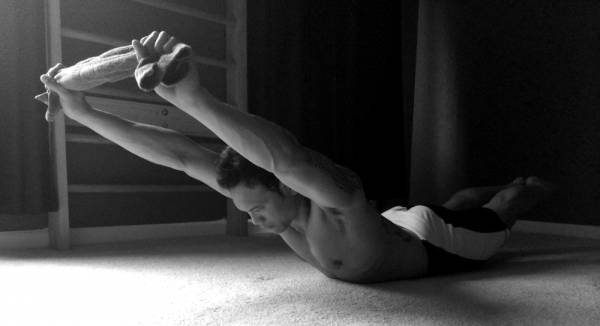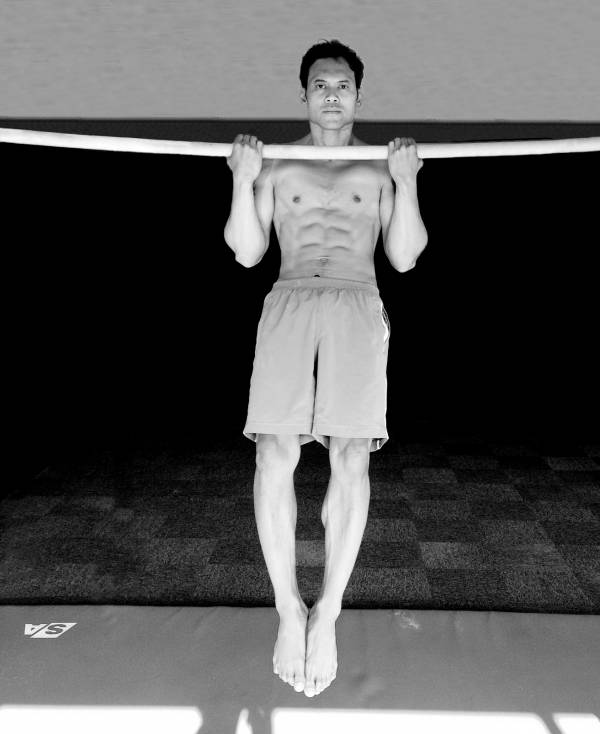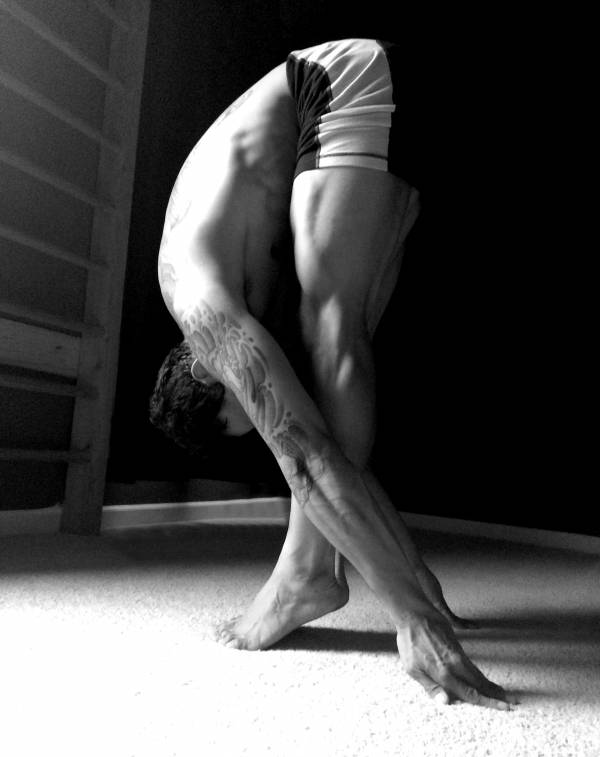Gymnastics strength training provides countless benefits to those willing to commit to the process. By focusing on bodyweight progressions, athletes have the opportunity to increase relative strength, strength endurance, mobility, proprioception, kinesthetic awareness, and more.
Additionally, the intense full-body muscle contractions and significant time spent under tension lead to great gains in hypertrophy, lean muscle mass, and fat loss.
The Road to Gymnastic Success
The greatest benefit from gymnastics strength training is not directly related to either ability or physique, but rather to your mindset and approach. In the fitness industry, just as in life, it is all too common to encounter people who want instant gratification and immediate results.
“Stretching, high reps, and joint prehab. There’s no time for that,” they think. They just want to hold a handstand, climb a rope, or learn a back flip. The big problem, though, is that these people often end up injured, plateaued, or both.
Successful trainees are those who take gradual, consistent steps on the path towards long-term growth by prioritizing quality and mastery. Coach Sommer, the founder of Gymnastic Bodies, likes to compare this shift in mindset to the difference in maturity between a child and an adult.
“Successful trainees are those who take gradual, consistent steps on the path towards long-term growth by prioritizing quality and mastery.”
A child wants things right away, and if a task takes hard work, discipline, or commitment, the child is likely to give up and shift attention to something new. As a person matures into an adult, they are more likely to realize the potential benefits of focusing on one task for longer periods of time, even if it does require significant amounts of energy.
Four Basic Gymnastics Strength Training Tests
Here are four basic gymnastics strength-training tests to get you started toward long-term growth. For many of us, modern lifestyle and one-sided training have stolen our ability to complete these relatively simple bodyweight tasks, so do not be surprised if these end up being a bit more challenging than you first presume.
Hollow Body Hold
The hollow body hold is a foundational position in all of gymnastics, and as such it is one of the first positions you should master. Begin by lying down on your back, with your legs outstretched and together. Completely straighten your legs by flexing your knees, and ensure proper form by pointing your toes as far away from your body as possible. Also reach your arms overhead, completely straightening your elbows and looking up towards the ceiling.
From this outstretched position, engage your entire anterior core by lifting your arms and legs off the floor. You should focus on pressing your lower back into the ground while squeezing your entire abdominal wall. Be sure that your shoulders are slightly lifted and your ribs are tucked in rather than protruding from your chest. Ideally your body shape should be smooth and round, almost like a banana.
Hold this hollow body position for a full sixty seconds. To ensure there is no cheating, use a timer, metronome, or stopwatch to count your minute. If you cannot hold the position with integrity for the full time, then you might need to start with a scaled version such as tucking your legs in towards your chest or bringing your arms down by your side.

Arch Body Hold
This is the complete opposite position as the hollow body. Where the hollow body works the entire anterior core, the arch body position will expose any weakness along your posterior chain. Additionally, many people are chronically tight in the front of their bodies, and the arch body hold will open up tight areas such as your chest and hip flexors.
“This should serve as a wake-up call for you to strengthen your posterior chain and stretch your chest and hip flexors.”
To start, lie facedown on your belly with your arms outstretched overhead and your legs straight and together. As you can imagine, the goal here is to completely arch your entire body as much as possible, so lift both your upper and lower body as high as you can towards the ceiling. Focus on engaging your glutes and mid-back so you are not exclusively arching from your lower back.
If you are like most people who try to hold an arch body position for sixty seconds, you will begin to tremble, shake, curse, and drop to the floor before the minute has expired. This should serve as a wake-up call for you to strengthen your posterior chain and stretch your chest and hip flexors.
If necessary, break down the arch body position in a similar fashion to the hollow body hold by bringing your arms down to your side, bending your knees, or both.

Bent-Arm Chin Hang
So now that we have thoroughly tested (and trashed) your core strength, we move on to the bent-arm chin hang. The key phrase here is time under tension, as you will attempt to hold your chin over a bar for, you guessed it, sixty full seconds. Grip the bar with a supinated, underhand grip, and pull yourself as high above the bar as you can. Keep your legs together, make sure your body is not swaying excessively, and hold on tight.
“The key here is that training your strength endurance at slightly lower intensities builds more than just muscle.”
If you cannot yet do a chin up, then this bent-arm chin hang might help you get there due to the amount of time you will spend holding on above the bar. If you cannot hold this position for any significant period of time, then you might need to start on an incline by holding onto a set of rings set approximately to shoulder height.
If you can already do strict chin ups, then you may be wondering why bother just holding the top position for time? The key here is that training your strength endurance at slightly lower intensities builds more than just muscle. Your connective tissue needs longer to adapt, and as such you should spend time mastering the bent-arm chin hang before moving on to more advanced (and potentially injury-inducing) pulling movements such as muscle ups and rope climbs.

Standing Pike Stretch
Finally, you get to relax and stretch. The standing pike stretch will assess flexion through the hips and spine, and those of you with tight hamstrings might struggle a bit here. Stand up tall with your legs completely straight and knees locked out, and completely fold over forward, placing your hands on the ground as fully as possible. Your goal is to reach your hands behind your feet to the point where you can press your bodyweight up onto your toes.
“The standing pike stretch will assess flexion through the hips and spine, and those of you with tight hamstrings might struggle a bit here.”
If this position is unattainable for you right now, then try doing a partner seated pike stretch. Sit up tall with your legs outstretched in front of you, knees totally straight, and have your partner gently push forward on the middle of your back. Inhale and exhale with your partner’s pushes, and reach your hands towards your feet, all while pressing the backs of your knees into the floor.

Conclusion
In any endeavor in life, you get out exactly what you put in. Impatient, shortsighted efforts will yield incomplete and poor-quality results, if not long-term injuries. On the other hand, a consistent work ethic, when paired with world-class programming and coaching knowledge, will allow trainees to continue to experience progress for months and years on end.
What else are people reading?
- Mobilize Your IT Band and Posterior Chain: Yoga for Strength Athletes
- Earn Your Muscle Up: 4-part Video Training Plan
- Guaranteed Success Through Consistent, Hard Effort
- Three Traps of Modern Day Thinking That are Killing Your Progress
- What’s New on Pulse Beat Fit Today
Photos courtesy of Orench Lagman and Crystal Hatch from Awaken Adult Gymnastics.






